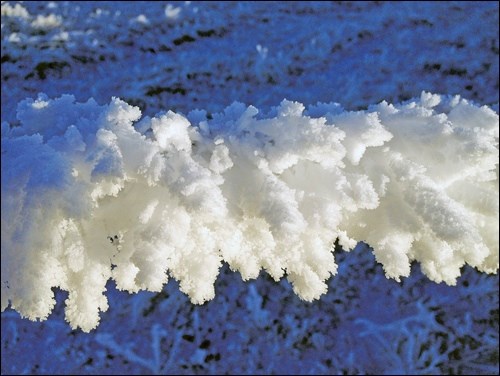The definition for fog is a thick cloud of tiny water droplets suspended in the atmosphere at or near the earth's surface that obscures or restricts visibility, to a greater extent than mist, i.e. strictly, reducing visibility to below one kilometre.
From the Internet, we learn: “The major centres in Canada that experience most fog are St. John's, Nfld, with fog reported on an average of 126 days per year; Halifax, NS, with 74; Vancouver, BC, with 62. Penticton, BC, receives least fog, an average of 4 days per year. Argetia, Nfld has the most fog of any place in Canada, averaging 206 days per year.” It is natural to think that coastal regions will experience this weather pattern.
Saskatchewan is used to fog on occasion but many seemed surprised by the length and duration of fog in December in our area. Fog advisories were common. Although residents were thrilled with the landscape afterwards showcasing the thick layers of frost left behind from the intense fog, they were not as pleased with the poor driving conditions during this lingering fog.
Social media was full of photos as people admired the winter wonderland left behind from the foggy conditions in December. Hoar frost made for some beautiful photos.
As defined on the Internet, “Hoar frost is an arrangement of ice crystals on objects. The appearance of hoar frost results from the sublimation of water vapor into ice. When the temperature of items on the ground are below freezing, condensation of water vapor can occur. Similar to the formation of dew, moist air will be cooled when it comes in contact with the cold surfaces. The air will quickly reach the dew point temperature, which, in this case, is below freezing. The water vapor will then convert directly into ice and leave needle-like coatings of hoar frost on various objects including grass, trees, telephone wires, and more.”
Beautiful photos are one bonus to this condition however heavy hoar frost is not a friend to power lines. SaskPower tweeted from an outage the week of Dec. 15: “The frost may look pretty but it can cause lines to gallop and poles/crossarms to break causing major outages. Please do not approach downed power lines.”
It has been said that fog in January means a wet spring while a foggy February either means frost in May or windy spring. But what does fog in December mean? I haven’t found a single source or single person that can outline that for me so, until then, we’d be glad to hear your theories.




